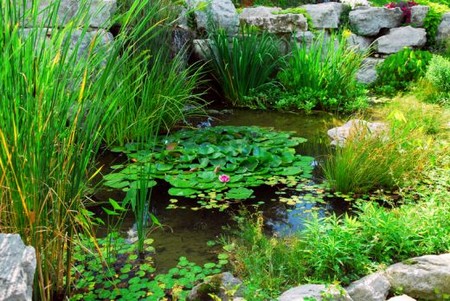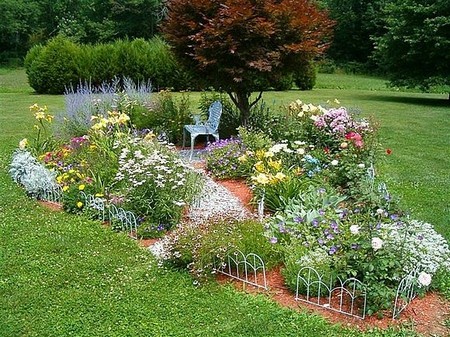Never a dry season passes without stringent water restrictions being brought into force. This is why it makes good sense to concentrate in the long term on improving soil texture and mulching generously. This is in an effort to conserve moisture, promote healthy growth and drought-resistant plants. The alternative is to rely on applying copious amounts of water during prolonged dry weather. Of course some crops and some plants are more drought-resistant than others. In the vegetable garden for instance, opt for ‘bolt resistant’ varieties wherever possible. To bolt is to run prematurely to seed — very often brought on by a setback of some sort like drying out.
COLLECTING WATER
As a buffer against restrictions, install a water butt — or two — to collect rainwater from your garage, shed, greenhouse or dwelling roof. Regardless of restrictions, a supply of rainwater is very useful, particularly if lime-hating plants are grown in hard water areas where the tap water contains lime.
ALWAYS WATER:
1. Container-grown stock before planting out.
2. The bottoms of seed drills before sowing in dry weather, using a can with fine rose.
3. The bed prior to setting out bedding plants in dry weather. Allow about 101 per sqm (4gal per sqyd) and apply through a fine rose.
ENSURE THE FOLLOWING ARE KEPT MOIST:
1. Container plants.
2. Seedlings.
3. Young growing plants in both the flower and the vegetable garden.
4. Anything newly transplanted.
5. Fruits, as the crops are swelling.
6. Shallow-rooting plants.
Note
Never let plants wilt through lack of water — irreparable damage can be done.
APPLYING WATER
In small gardens, stick to a watering can or hose for general use, as they give a greater measure of control when compared to the automation of seep or trickle hoses.
Always water with a rose attachment fixed to your hose or watering can — never use them open-ended. The danger is that water is applied too quickly, causing damage to both plants and soil, and as plants are flattened and soil washed away from their roots, the ground becomes compacted. The need for slow water application is of particular significance on heavy soils. When subjected to a deluge of water, they are liable to puddling with the subsequent formation of a damaging surface crust.
Concentrate the water around the base of all newly set out plants i.e. practise ball watering until established.
Water generously at each watering. Never water in dribbles. This is counterproductive since it encourages shallow rooting with the consequential inability to withstand future droughts.
Don’t water plants in strong sun in case of leaf scorch; wait until the evening. In shaded areas, however, try to water early in the day, as this gives the foliage time to dry by nightfall and reduces the risk of fungal diseases.
During dry, warm or windy weather, spray over newly planted conifers and evergreens in the evenings — using clean water. Similarly spray over growing crops of beans and tomatoes to promote a good set of fruit. In the absence of a sprayer, a watering can with fine rose attachment will do an acceptable job.

